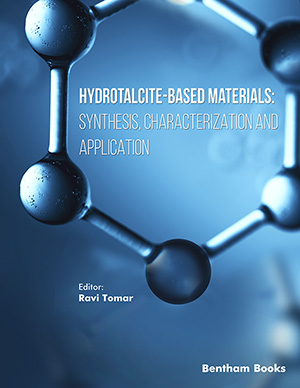
Abstract
Acute kidney injury is described as a loss of renal excretory function that occurs suddenly. AKI is one of several ailments grouped together as acute kidney diseases and disorders (AKD), in which progressive degradation of kidney function or persistent renal dysfunction is associated with irreversible loss of kidney cells and nephrons, potentially leading to chronic kidney disease (CKD). The prevalence and incidence of KDs are assessed in light of population disparities in the prevalence of risk factors such as diabetes, hypertension, and obesity. However, the presence of these associated illnesses does not fully explain the increased rate of progression of chronic renal disease in high-risk patients (CKD). The development of renal disease is accompanied by a decline in renal function, which eventually leads to renal failure. The current status of diagnostic testing does not allow for accurate early disease diagnosis, prognosis, or therapy efficacy monitoring. Despite significant advances in care and understanding of the causes of acute renal failure (ARF), many aspects of ARF remain controversial, confusing, and uncertain. Accurate information on the disease's prevalence, genesis, and clinical manifestations is required to successfully advocate for enough funding and resources to manage the disease. Herbal components for the treatment of a variety of kidney disorders, and the page includes a list of plants that are good for kidney treatment. This review focuses on several herbal products used to treat renal problems. It is clear from this study that medicinal plants play an important role in the fight against many different diseases. Several different plants and plant extracts have been shown to have beneficial effects in treating renal disease. These medications have great promise for use in treating kidney damage because of their nephroprotective, cytoprotective, immunomodulatory, antioxidant, anti-inflammatory, and reducing effects on oxidative stress, renal hypertension, and blood toxins such as urea, creatinine, and others. Therefore, India's traditional medicine offers a wide variety of medications that can be utilized in renal illnesses due to their effectiveness in both treating the ailment and restoring normal kidney function. Therefore, it is suggested that additional research be conducted to learn many aspects and mechanisms of medications.
Keywords: Acute kidney failure, long-term kidney disease, common renal disease, herbal treatment, renal failure, kidney.
[http://dx.doi.org/10.1016/j.lfs.2005.03.034] [PMID: 16005905]
[http://dx.doi.org/10.1681/ASN.2008040402] [PMID: 18799718]
[http://dx.doi.org/10.1038/nrneph.2013.129] [PMID: 23856995]
[http://dx.doi.org/10.1542/peds.113.S3.1084] [PMID: 15060203]
[http://dx.doi.org/10.1038/nrneph.2018.11] [PMID: 29479079]
[http://dx.doi.org/10.1093/ndt/gfm863] [PMID: 18182406]
[http://dx.doi.org/10.1186/cc2872] [PMID: 15312219]
[http://dx.doi.org/10.1164/ajrccm.162.1.9907016] [PMID: 10903628]
[http://dx.doi.org/10.1097/01.ASN.0000141324.49873.11] [PMID: 15466282]
[http://dx.doi.org/10.1177/0885066607299510] [PMID: 17712054]
[http://dx.doi.org/10.1038/ki.1993.163] [PMID: 8510397]
[http://dx.doi.org/10.1111/j.1523-1755.2004.761_2.x] [PMID: 15253693]
[http://dx.doi.org/10.1001/jama.288.20.2547] [PMID: 12444861]
[http://dx.doi.org/10.1056/NEJM199212313272704] [PMID: 1454086]
[http://dx.doi.org/10.1016/S0735-1097(00)00613-6] [PMID: 10841219]
[http://dx.doi.org/10.4236/ojcd.2020.101004]
[http://dx.doi.org/10.1016/S0022-5347(17)35030-9] [PMID: 8308970]
[http://dx.doi.org/10.1681/ASN.V961074] [PMID: 9621291]
[http://dx.doi.org/10.1093/bja/ael224] [PMID: 16914459]
[http://dx.doi.org/10.1097/MNH.0000000000000643] [PMID: 33009132]
[http://dx.doi.org/10.1056/NEJMoa013036] [PMID: 12110738]
[http://dx.doi.org/10.1136/bmj.309.6968.1557] [PMID: 7819900]
[http://dx.doi.org/10.1056/NEJM199809243391306] [PMID: 9744974]
[http://dx.doi.org/10.1007/s00018-007-7362-x] [PMID: 17975706]
[http://dx.doi.org/10.1097/01.ASN.0000028643.17901.42] [PMID: 12191984]
[http://dx.doi.org/10.1016/S0022-3476(89)80735-8] [PMID: 2685218]
[http://dx.doi.org/10.1056/NEJMra022161] [PMID: 14711914]
[http://dx.doi.org/10.1037/0022-006X.70.3.712] [PMID: 12090378]
[http://dx.doi.org/10.1016/j.eururo.2012.03.052] [PMID: 22498635]
[http://dx.doi.org/10.1155/2018/3068365]
[http://dx.doi.org/10.5830/CVJA-2012-025] [PMID: 23044503]
[http://dx.doi.org/10.1053/j.ajkd.2004.02.009] [PMID: 15211432]
[PMID: 8758359]
[http://dx.doi.org/10.1007/s12011-009-8603-7] [PMID: 20084467]
[http://dx.doi.org/10.1248/cpb.32.4506] [PMID: 6532552]
[http://dx.doi.org/10.1016/j.intimp.2014.08.018] [PMID: 25173984]
[http://dx.doi.org/10.1038/bjp.2008.26] [PMID: 18264122]
[http://dx.doi.org/10.1093/oxfordjournals.ndt.a027039] [PMID: 8649632]
[http://dx.doi.org/10.1055/s-0029-1185948] [PMID: 19639539]
[http://dx.doi.org/10.1080/10286020412331286506] [PMID: 17454311]
[http://dx.doi.org/10.1038/ki.2013.276] [PMID: 23868014]
[http://dx.doi.org/10.1016/j.fitote.2012.08.019] [PMID: 22981502]
[http://dx.doi.org/10.3390/ijms13078379] [PMID: 22942709]
[http://dx.doi.org/10.1016/j.jep.2011.11.053] [PMID: 22155389]
[http://dx.doi.org/10.1371/journal.pone.0044938]
[http://dx.doi.org/10.1016/j.jep.2010.11.064] [PMID: 21130857]
[http://dx.doi.org/10.1631/jzus.B0820230] [PMID: 19434765]
[http://dx.doi.org/10.1016/j.intimp.2006.08.016] [PMID: 17161813]
[http://dx.doi.org/10.1016/j.jep.2007.08.024] [PMID: 17900838]
[http://dx.doi.org/10.1016/j.lfs.2003.08.036] [PMID: 14738908]
[http://dx.doi.org/10.1055/s-0029-1240943] [PMID: 20195958]
[http://dx.doi.org/10.1016/j.jep.2010.10.012] [PMID: 20951192]
[http://dx.doi.org/10.1016/j.jep.2009.08.046] [PMID: 19735713]
[http://dx.doi.org/10.1053/j.ajkd.2007.07.032] [PMID: 18037104]
[http://dx.doi.org/10.1142/S0192415X1250005X] [PMID: 22298448]
[http://dx.doi.org/10.1089/acm.2009.0226] [PMID: 20804368]
[http://dx.doi.org/10.1016/j.phytochem.2008.01.027] [PMID: 18343466]
[http://dx.doi.org/10.1211/jpp.57.12.0001] [PMID: 16354395]
[http://dx.doi.org/10.1067/mlc.2003.6] [PMID: 12518171]
[http://dx.doi.org/10.1016/S0024-3205(03)00652-0] [PMID: 12954458]
[http://dx.doi.org/10.1016/S0022-2143(99)90171-3] [PMID: 10560943]
[PMID: 7724020]
[http://dx.doi.org/10.4103/0366-6999.202730] [PMID: 28345548]
[http://dx.doi.org/10.1159/000323655] [PMID: 21335937]
[PMID: 1597083]
[http://dx.doi.org/10.1039/c2np00088a] [PMID: 22270059]
[http://dx.doi.org/10.1016/j.intimp.2011.01.012] [PMID: 21255694]
[http://dx.doi.org/10.1111/j.1365-2125.2012.04221.x] [PMID: 22348323]
[http://dx.doi.org/10.2165/00126839-200304010-00001] [PMID: 12568630]
[http://dx.doi.org/10.1038/ki.2008.203] [PMID: 18509322]
[http://dx.doi.org/10.1038/ki.2010.41] [PMID: 20375980]
[http://dx.doi.org/10.1681/ASN.2008030259] [PMID: 18650476]
[http://dx.doi.org/10.3109/01480541003774358] [PMID: 20954797]
[http://dx.doi.org/10.1016/S0162-3109(98)00036-8] [PMID: 9826028]
[http://dx.doi.org/10.1016/j.toxlet.2012.07.008] [PMID: 22820427]
[http://dx.doi.org/10.1053/j.ajkd.2007.10.040] [PMID: 18215698]
[http://dx.doi.org/10.1142/S0192415X11009007] [PMID: 21598419]
[http://dx.doi.org/10.1111/j.2042-7158.2010.01170.x] [PMID: 21749378]
[http://dx.doi.org/10.1016/S0736-0266(03)00043-3] [PMID: 12919873]
[http://dx.doi.org/10.1159/000064112] [PMID: 12372950]
[http://dx.doi.org/10.1016/j.intimp.2012.06.010] [PMID: 22728095]
[http://dx.doi.org/10.1139/O07-002] [PMID: 17534396]
[http://dx.doi.org/10.1002/jcb.22126] [PMID: 19301261]
[http://dx.doi.org/10.1159/000085059] [PMID: 15824516]
[http://dx.doi.org/10.1142/S0192415X90000216]
[http://dx.doi.org/10.1111/j.1440-1827.1994.tb02933.x] [PMID: 8044302]
[PMID: 7752502]
[http://dx.doi.org/10.1007/BF01973686] [PMID: 8481103]
[http://dx.doi.org/10.1046/j.1523-1755.2000.00168.x] [PMID: 10886577]
[PMID: 16910587]
[http://dx.doi.org/10.1111/j.1440-1746.2006.03373.x] [PMID: 17444872]





























